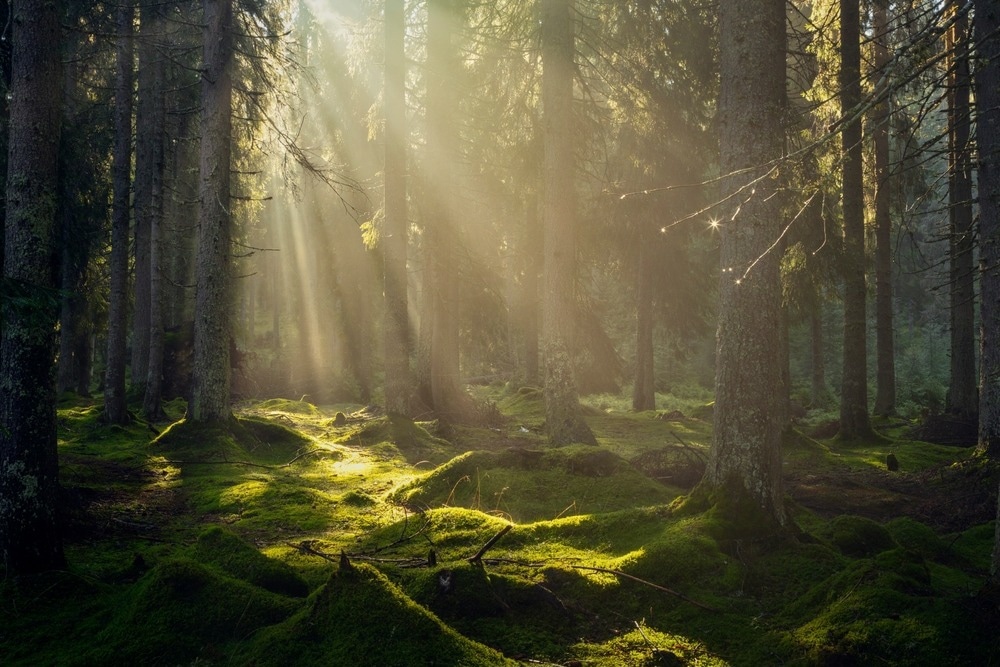Reviewed by Danielle Ellis, B.Sc.Jan 8 2024
Recent research published in Nature Communications Biology adds to the increasing understanding of the disproportionate impact that microbes have on everything from crop yields to human digestion: Global forest diversity appears to be influenced by microbes in the soil, in this case, fungi.

Image Credit: Tom Tom/Shutterstock.com
Earth’s forests show a clear gradient from the equator to the poles: tropical forests close to the equator typically support a greater diversity of plant species, while forests closer to the poles support fewer species.
According to one explanation, this gradient is partly produced by soil pathogens, such as fungi and bacteria. Pathogens unique to a particular species tend to gather around mature trees, and their prevalence can reduce the chances of juveniles developing close to their parents, thereby encouraging a diversity of species. The greater diversity found in forests close to the equator is a result of this effect, which is stronger in warm, humid climates.
But a recent study headed by Lead Scientist Camille Delavaux of ETH Zurich in Switzerland gives this well-known narrative a twist. The majority of plant roots worldwide have mutually beneficial relationships with soil fungi known as mycorrhizal fungi, and it appears that these fungi are counteracting the effects of harmful soil pathogens in ways that impact global patterns of forest diversity.
This paper provides an additional mechanism that may help explain why forest compositional diversity differs with latitude, and a little more about how microbes may regulate patterns of diversity across the planet.”
Matthew Baker, Professor and Study Co-Author, Geography and Environmental Systems, University of Maryland, Baltimore County
Microbes Influence Tree Diversity
The two main groups of these mutualistic fungi, arbuscular mycorrhizal and ectomycorrhizal, may increase the survival of young plants. On the other hand, ectomycorrhizal fungi were found to have a more noticeable effect in the study by Delavaux and colleagues.
Researchers think that the sheath that ectomycorrhizal fungi create around plant roots may actually shield the plants from diseases. At higher latitudes, ectomycorrhizae are more prevalent and more likely to be specialized organisms that support a single species of tree.
Arbuscular fungi are more prevalent in the equatorial regions and might provide less defense against infections. Additionally, fungi are less likely to focus on a single species of tree. It follows that fungi have a higher chance of promoting the growth of other tree species close by.
The recent research presents initial evidence supporting both the diversity-enhancing impacts of arbuscular fungi and the diversity-constraining effects of ectomycorrhizal fungi “which seems to suggest that these mechanisms could very well play a role in driving patterns of global biodiversity in tree species,” Baker notes.
When combined with prior knowledge about these fungi, the research team's discoveries could potentially elucidate established patterns of forest tree diversity linked to varying latitudes. Baker says, “And that’s exciting. Global patterns of biodiversity may not result solely from antagonistic relationships between trees and their pathogens, but also from symbiotic relationships with fungi in soils.”
A Global Network for Forest Science
These findings were only possible because of an impressive global network of forest plots administered by the Smithsonian Institution’s Forest Global Earth Observatory (ForestGEO) Network.”
Camille S. Delavaux, Department of Environmental Systems Science, ETH Zurich
Researchers participating in the ForestGEO network are required to conduct tree inventories at their designated sites every five years. This involves documenting the size and exact coordinates of all trees within plot boundaries, specifically those with a diameter of at least one inch.
Additionally, some sites follow standardized protocols established by the network to gather information on wildlife, soil microbiota, and other factors. The present study incorporated data from 43 out of 77 global ForestGEO plots, including one situated on UMBC's main campus.
Baker says, “The network reflects the willingness of people in the scientific community to pool resources for the greater good.” In UMBC’s case, student volunteers, led by Graduate Student Anita Kraemer, collected the vast majority of the data.
Different Forests, Different Microbes
Two 6.25-hectare (roughly 15-acre) plots at UMBC are special in additional ways as well. In 2012, these urban, temperate ForestGEO plots were added to the network at the behest of graduate student Jonathan Dandois and geography and environmental systems Professor Erle Ellis, who is also a co-author of the study.
Dandois is currently the Manager of Geographic Information Systems at Johns Hopkins University. Dandois earned a doctorate in geography and environmental systems in 2013.
In addition to native plants, the UMBC plots feature forest edges that are close to campus amenities like parking lots, tennis courts, and swimming pools. Because of this, the species diversity of the plots per unit area is higher than that of other temperate forests and comparable to some of the network’s tropical forest plots. These insights have motivated Baker’s current urban forest research.
The new findings on the role of fungi in global forest structure may be just the beginning of understanding how microbes drive global biodiversity patterns. Baker says, “The scientific community is very much in the learning stage about appreciating the diversity of different types of soil microbes and their distribution over the planet and investigators like Dr. Delavaux are expanding our understanding.”
Delavaux is excited about pursuing related work moving forward.
Future research will leverage the available tree census data and generate additional microbial genetic sequencing data from 30 plots to directly link the microbiome to plant community structure.”
Camille S. Delavaux, Department of Environmental Systems Science, ETH Zurich
Source:
Journal reference:
Delavaux, S. C., et al. (2024) Mycorrhizal feedbacks influence global forest structure and diversity. Communications Biology. doi/s42003-023-05410-z